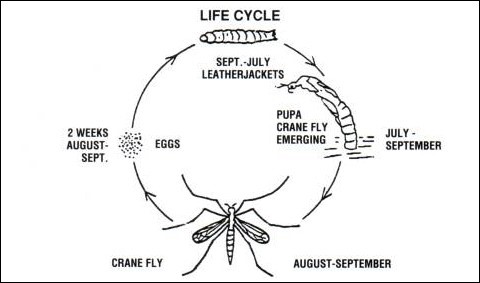Your Cart

What are Leatherjackets?
European Crane Flies
Leatherjackets are larvae of the European Crane Fly, commonly referred to as the marsh crane fly. Adult crane flies, resembling giant mosquitoes, are large 9/16“ - 13/16“ (15-20mm) tan flies with long legs. Larvae are cylindrical in shape and reach lengths of 13/16” - 1” (20-25mm). Their tough leathery appearance gives them their common name.
Leatherjackets are found in coastal areas. They inflict serious damage on home lawns by feeding on the root hairs, roots and crowns of grass plants. They also feed at night above the surface consuming stems and leaves. Damaged areas turn yellow and wilt. Heavy infestations can result in brown patches of dead grass.
Life Cycle
European Crane Flies require one year to complete their life cycle. Adults emerge in mid July through September/early October and begin mating immediately after they emerge. Females lay up to 350 shiny black eggs on the grass and soil. Eggs hatch within a couple of weeks and larvae begin feeding. Larvae feed throughout the fall and spend the winter below the surface of the lawn. During warm periods of the winter they can move closer to the surface and resume feeding. By March and April heavy feeding occurs as larvae reach their maturity. Larvae continue feeding until about mid July. At this time they begin to pupate, then later transform into adult crane flies.

Control
Your Weed Man Denver technician is a highly trained specialist. He can properly identify a leatherjacket problem on your lawn and determine whether or not a control is warranted in order to protect your investment. One of our skillfully trained technicians can apply a high quality insect control material where treatment is needed. Leatherjacket larvae are more easily controlled in fall or early winter while they are still young. Spring treatments are also available to control this pest. If you suspect a leatherjacket problem on your property call your Denver Weed Man and he will inspect your lawn free of charge.
